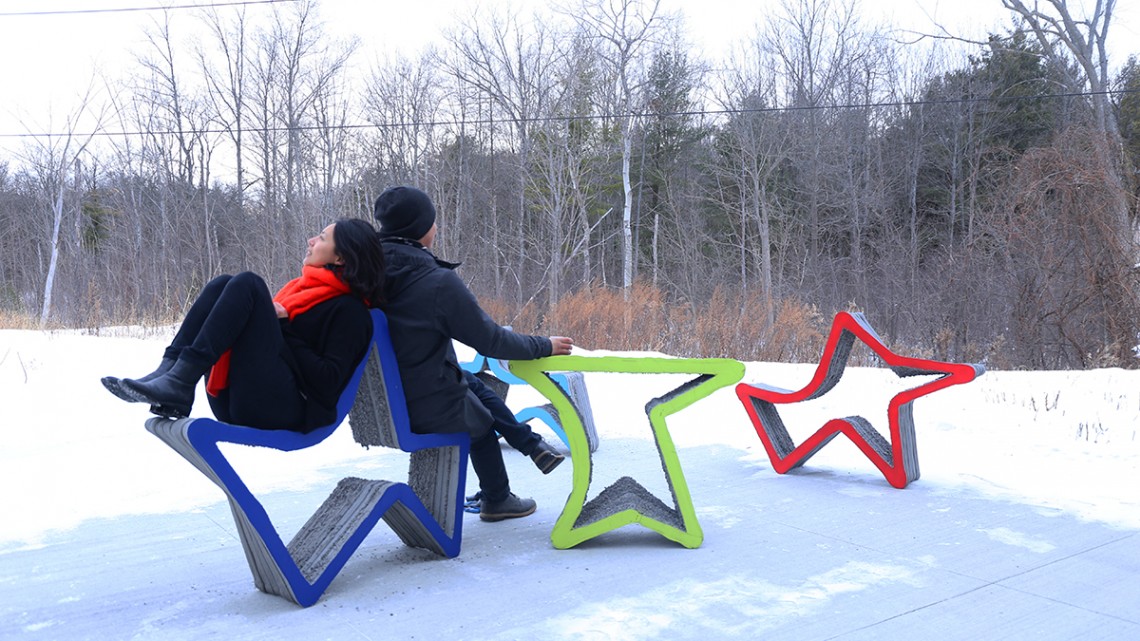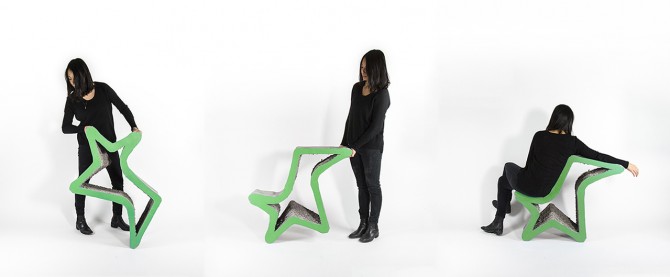
These full-scale prototypes of HANNAH’s concrete seating were 3D-printed in Cornell’s Robotic Construction Laboratory for the “RRRolling Stones” project.
How they roll: Architecture faculty create winning design
By Daniel Aloi
“RRRolling Stones,” a sculptural project by Cornell faculty members Leslie Lok and Sasa Zivkovic’s design firm HANNAH, has won the Folly/Function 2018 competition sponsored by the Architectural League of New York and Socrates Sculpture Park.
The winning design is a durable, movable outdoor seating system made from 3D-printed concrete using Cornell-developed technology, and exploiting the standard ergonomics of a functional chair with curvature and seating profiles accommodating different body types and sizes. The project, 25 seats in all, will be installed this summer and opens July 12 at the sculpture park in Queens.
The seats can be rolled over and configured into small seating groups or continuous benches. “Leveraging movement architecturally and as folly itself, there is pleasure in the archaic act of rolling a stone and discovering new seating configurations with each turn,” the creators state in the project description.
According to the Architectural League, the “playful design encourages creative interaction and emboldens park visitors to configure them in original arrangements based on preference and need – linear benches of various lengths, in small clusters, or as solitary seats dotting the landscape.”
Lok is a visiting critic and the B.Arch. program coordinator in the Department of Architecture. Zivkovic is an assistant professor of architecture. HANNAH is their experimental design practice, based in the United States and Germany.
The RRRolling Stones project team also included Kun Chen, M.Arch. ’19, and Olivier Ducharme, M.Arch. ’20.
Using a special cement mixture reinforced with nylon fibers, the seating was prototyped and manufactured at the Robotic Construction Laboratory (RCL) at Cornell. Zivkovic directs the lab, an interdisciplinary research group investigating advanced materials and novel construction technology.
HANNAH utilized full-scale, open-source concrete 3D printing technology developed at RCL, Zivkovic said, “strategically manipulating the printer’s tool-path geometries to create a series of seating profiles which are comfortable and mass-configurable. Our aim is to take full advantage of the printing process.”
Folly was launched in 2012 to explore the intersections and divergences between architecture and sculpture. The annual juried competition, supported by the New York State Council on the Arts, challenges architects and designers to design and build a large-scale project for public exhibition at Socrates.
The competition was renamed Folly/Function in 2016, shifting in emphasis and asking entrants to create lasting designs that improve conditions in the park.
Austin + Mergold, co-founded by assistant professor of architecture Aleksandr Mergold, B.Arch.’00, won the 2014 competition with “SuralArk.”
Media Contact
Get Cornell news delivered right to your inbox.
Subscribe

